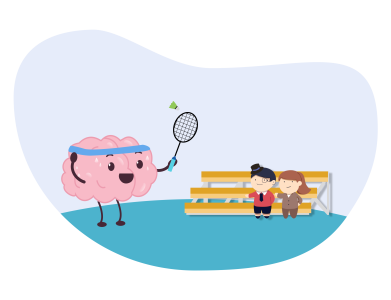
- GRIP Learning's Team
Here are ten warning signs of low self-esteem to keep an eye out for so you can get help (from a life coach, therapist, or other mental ...
Let’s take a look at some practical applications of the principles of neuroplasticity that can help you feel better in many aspects of your life. But first, let’s know what neuroplasticity is!
Neuroplasticity is the ability of your brain to change how it looks and how it works in response to new experiences.
Neuroscientists once believed that the brain could not change from its present state. For a long time, scientists thought that the brain stopped developing after childhood.
But science has disproved this idea.
Although brain plasticity is greatest during early development, adults also have the capacity for learning and developing new skill sets. The brain is plastic. Indeed, neural structures may and do evolve.
Individual brain cells have the ability to spread out and form new connections with neighboring cells. They can make new neural pathways in the brain and change how strong the ones that are already there are.
This is the case whether you’re learning something new or relearning something you lost due to something like a stroke, brain injury, tumor, or infection.
Yet, this transformation requires some time. In addition, specialized training and education are required. But if you know how your brain responds to therapy, you’ll be better able to speed up the healing process and bring about lasting improvement.

Kleim and Jones have outlined ten principles of neuroplasticity that may be beneficial to keep during treatment:
There is a distinct network in your brain for every mental process, physical motion, and acquired ability. If you don’t use a skill often, the neural pathways in your brain that help you use it start to weaken and die.
For instance, you used to play the violin and regularly practiced scales, your brain’s neural pathways for left-hand finger dexterity will remain active and strong. But if you stopped training, your brain would stop putting energy into maintaining those pathways, and they would gradually die off to conserve energy.
Consistent practice improves synaptic strength, so the more you do something, the better you get at it. The more you use your affected language skills (speaking, listening, reading, and writing), the faster and more accurately you will recover.
The training experience must be emotionally meaningful in order to trigger plasticity.What a person learns and takes away from their training can have a significant impact on how well they heal. Since feelings can alter the efficacy of training or, say, memory consolidation, it is crucial that the therapist understand the patient’s priorities. The patient’s brain is typically already overloaded with input, therefore it helps if the therapist can make the instruction or knowledge salient and significant to the patient.
Behaviors need to be practiced repeatedly in order to become imprinted in the brain. To become proficient at something requires a great deal of practice, often in the thousands of repetitions. Practice makes perfect; the more time you put in, the better you’ll be.
Doing something that doesn’t push you to grow won’t yield noticeable results. Exercise intensity can be measured in terms of the number of repetitions or the degree of difficulty. Find an effort that is merely slightly more challenging than what you’re currently doing.
To achieve this goal, you must engage in very specific mental training. Rather than just repeating what you already know, actively learning something new or retraining an existing ability strengthens neural connections within the brain.
Even though it is impossible to say for sure how long it will take for the desired neuroplastic changes to happen, it is safe to assume that the longer and more deeply ingrained a behavior pattern is, even if it is subconscious, the more time it will take to loosen its neuronal hold.
If you’ve been unconsciously practicing an anxious response for as long as you can remember, replacing it with one of your choices will require some time and intentional interruption, repeated day after day. In any case, you shouldn’t worry; it won’t take as long as you would imagine. The longer you stick to your new routine, the more that routine will come to represent “normal” for you.
To put it simply, transference is the process that allows one set of skills to enhance the performance of another. As an example from the sporting world, football players put in a lot of time practicing speed drills such as running in place as fast as they can or training agility by running around obstacles. Because of these workouts, the player’s overall performance, like his or her speed and agility, should improve.
People with generalized anxiety might also get the benefits of transference. They may be able to maintain composure in situations that would have previously upset them by learning to calm their nervous system through deep breathing or the application of neuroplasticity procedures.
Interference is the opposite of transference. This occurs when the development of one set of abilities or habits hinders the development of another. As you can’t push a pencil with your right hand if you’re also writing with it, you can’t condition proper back posture if you habitually slouch. Adopting the new pattern or behavior requires giving up the old one that is holding you back.
Caffeine, as we all know, has a powerful excitatory effect on the brain, so if you’re trying to calm your nervous system after overcoming anxiety, consuming too much coffee may be counterproductive.
Though it’s true that children’s and teenagers’ brains are more malleable than those of adults, there is growing evidence in current neuroscience to support the idea that neurogenesis continues throughout a person’s life. This implies that learning, growth, adaptation, and change are possible at every age and stage of life. You shouldn’t lose hope or question your skills. Every second is a new opportunity to strengthen one’s cognitive abilities.
One of the biggest changes in how we think about brain plasticity is realizing that it happens throughout a person’s life. This has had a huge effect on how we treat people who have had brain injuries. Yes, brains may change and adapt after injury. However, to maximize the effectiveness of brain rehabilitation, we need to comprehend the underlying mechanisms of change. These principles of neuroplasticity treatment can maximize the efficacy of your therapy.
Kleim, J. A., & Jones, T. A. (2008). Principles of experience-dependent neural plasticity: implications for rehabilitation after brain damage. Journal of Speech, Language, and Hearing Research: JSLHR, 51(1), S225-39. https://doi.org/10.1044/1092-4388(2008/018)




